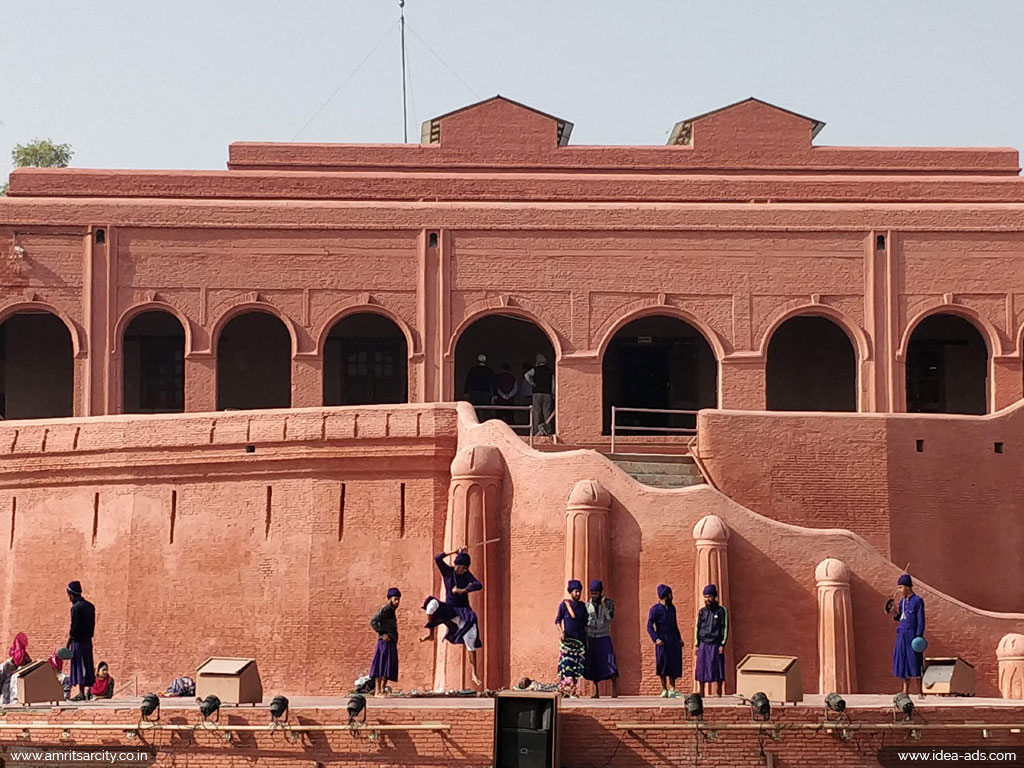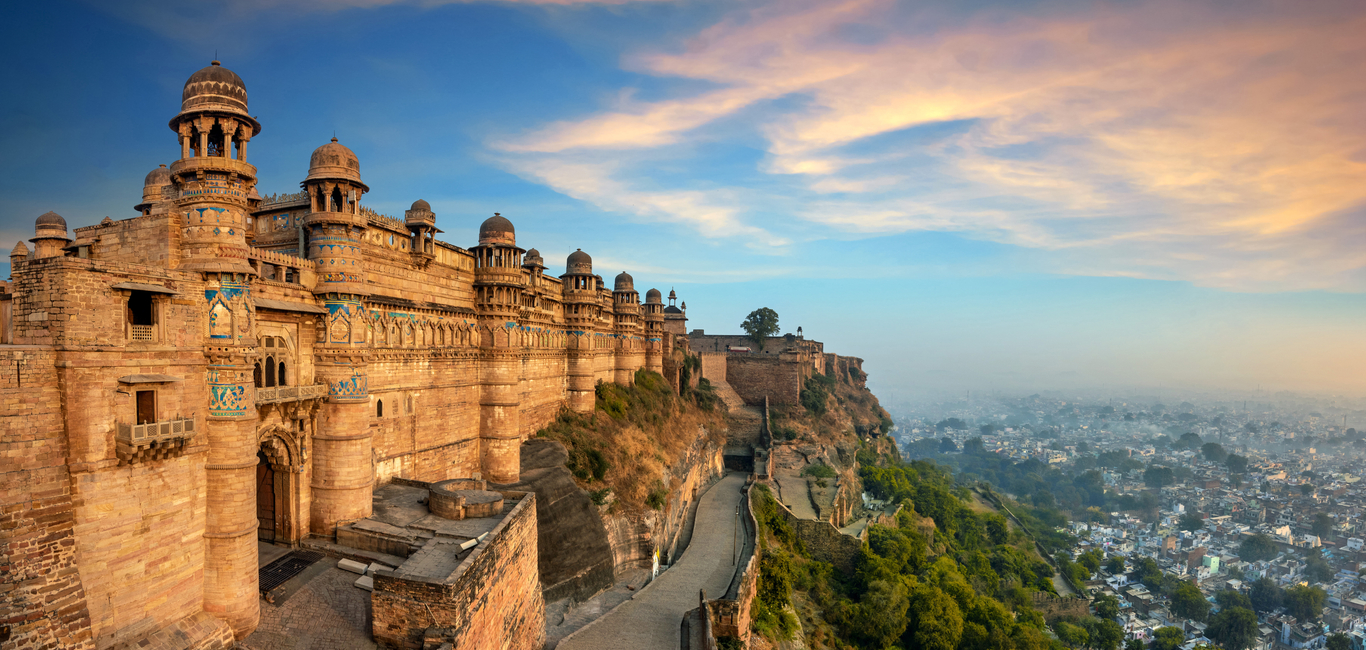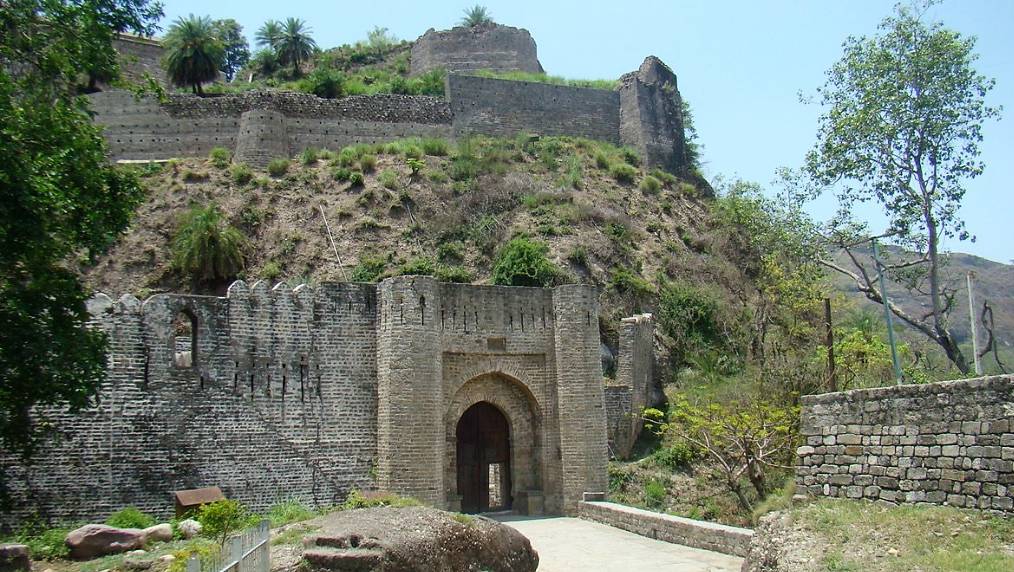The Gobindgarh Fort is a historical museum and cultural theme park showcasing the history of Punjab and Punjabi culture in all its glory. Various museums feature collections of traditional Punjabi attire, household items, and even weapons of war from the olden days. The light and laser shows such as Sher E Punjab and Whispering Walls showcasing the life of Maharaja Ranjit Singh and the story of Gobindgarh, respectively, are popular among tourists.
There are also live shows where performers entertain the audience with art forms such as bhangra and the traditional martial art known as Gatka. For those who are into art, the art museum houses many paintings of the many saints and warriors across Punjab’s history. Once done sightseeing, visitors can head to the Haat Bazaar, where they can buy traditional items such as Phulkari-styled attire and colorful Juttis (footwear).

Things to Do at the Gobindgarh Fort
- Sher e Punjab
A 7D show on the life of Maharaja Ranjit Singh will instantly take visitors back to the 19th century in the most beautiful way, leaving them amazed. The glorious history of the great king is depicted in a manner meant to educate and inspire visitors using holography and pepper ghost technology. This attraction is aptly called Sher e Punjab.
- Toshakhana
The coin minting house where old and new coins are displayed is now known as the Coin Museum. The importance of this museum is that the famous Kohinoor diamond, worn by the Maharaja, was once stored here. A replica of the Kohinoor is now on display under the original Nanakshahi brick. The circular structure of the roof, which has remained intact after all these years, continues to amaze visitors.
- The Bungalow
The building, formerly serving as a residence to the Garrison Commanders, has been converted into an ancient warfare museum. The museum has a comprehensive display of replicas of warfare instruments and attires, along with lifelike figurines.
- Spirit of Punjab
A stage where live performances of bhangra, gatka, gidda, comedy, games, dholi, etc., are performed all day long. Competitions are held, and prizes are given to visitors who participate each day.
- Ambarsari Zaika
Swaad Gali is where visitors can indulge in authentic Amritsari Punjabi cuisine in the various shops and live counters that impress the taste buds of the tourists.
- Haat Bazaar
The famous Amritsari Juttis, Phulkaris, and antiques are a delight for tourists looking for souvenirs and gifts.
- Kanda Boldiyan Ne
The mute walls of the fort have a story to tell after witnessing history. Whispering Wall is one of a kind show with the famous laser and art projectors depicting Maharaja Ranjit Singh’s life using mapping technology. Every evening, the show takes place after sunset, in both Punjabi and English, taking the viewer’s breath away.
Show Time – Punjabi voice-over at 8:30 PM. English Voice-over at 10:15 PM
History of the Gobindgarh Fort
Gujjar Singh Bhangi originally built the historical fort in the 18th century, calling it the Bhangian Da Qila. It was later captured and enhanced by Maharaja Ranjit Singh in the early 19th century, renaming it after the 10th Sikh guru, Guru Gobind Singh. The fort was also a witness to the grand wedding of Maharaja Ranjit Singh’s grandson Prince Nau Nihal Singh, in 1837. Maharaja Ranjit Singh strengthened the great fort to save Harmandir Sahib and the city from invasion. The revised plans were heavily inspired by the French Military, for which he took the help of a French architect. A fifty-meter tall water tower, which was completed in 1874, was demolished by the Indian Army after independence.
The architecture of the Gobindgarh Fort
The glorious fort is built out of lime and bricks, with 25 cannons and 4 bastions on its premises. The main entrance Nalwa Gate is named after Hari Singh Nalwa (Commander-in-chief of the Sikh Khalsa Army). On the eastern side, one can find a wooden door with fine intricate work called the Darwasa-a-i-Ali, which serves as the main entrance. The intriguing fort has an underground tunnel that leads to the Lohgarh Fort in Lahore. The French military architectural style influenced the moats that encircle the fort, measuring 100 meters in perimeter. The dab which supplied the water surrounding the trenches was called Moti Jhil. Artillery was produced inside alongside a coin minting factory which is converted into a museum.
Visit MakeMyTrip for bookings. Also, have a look at our various monthly issues.



